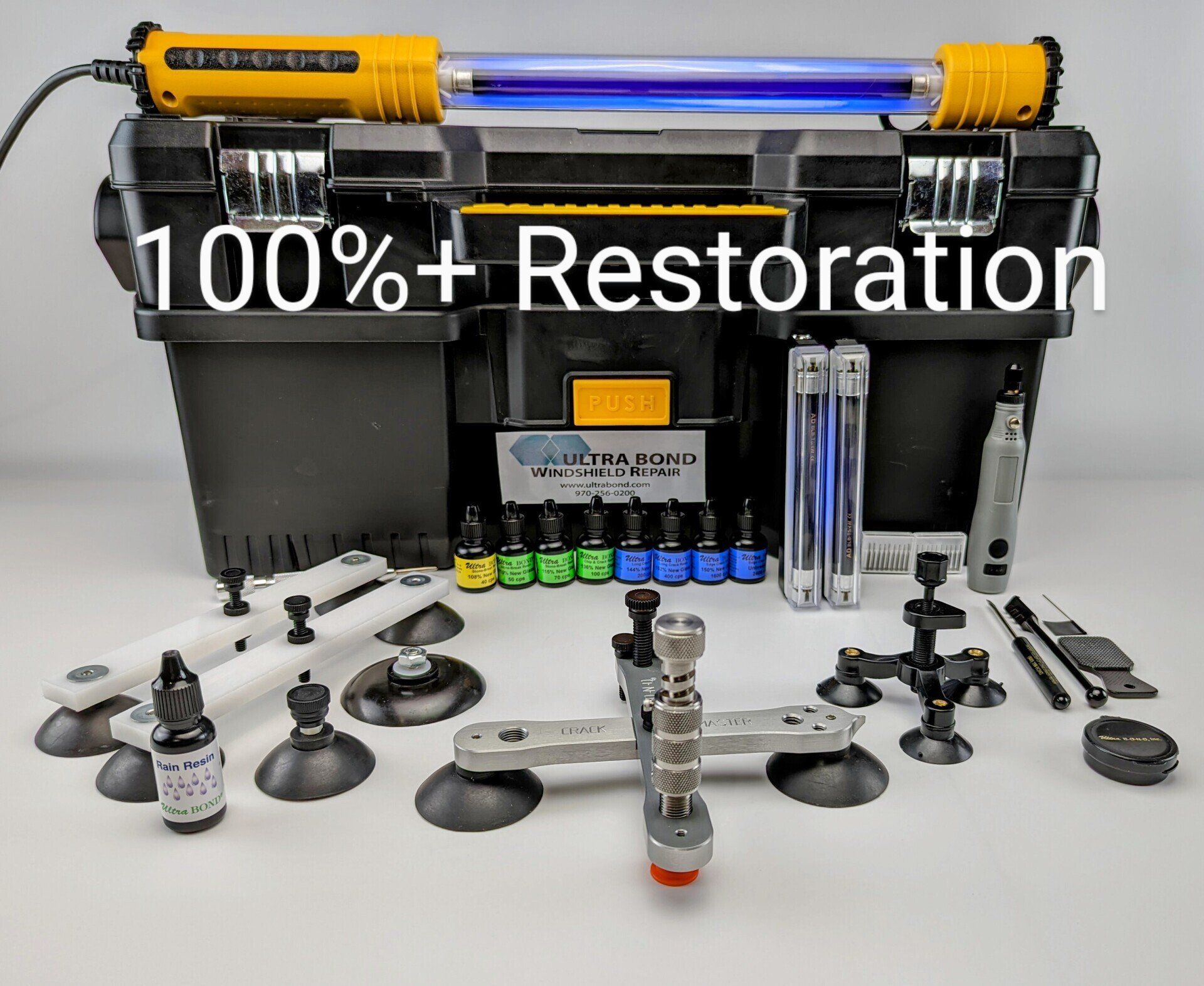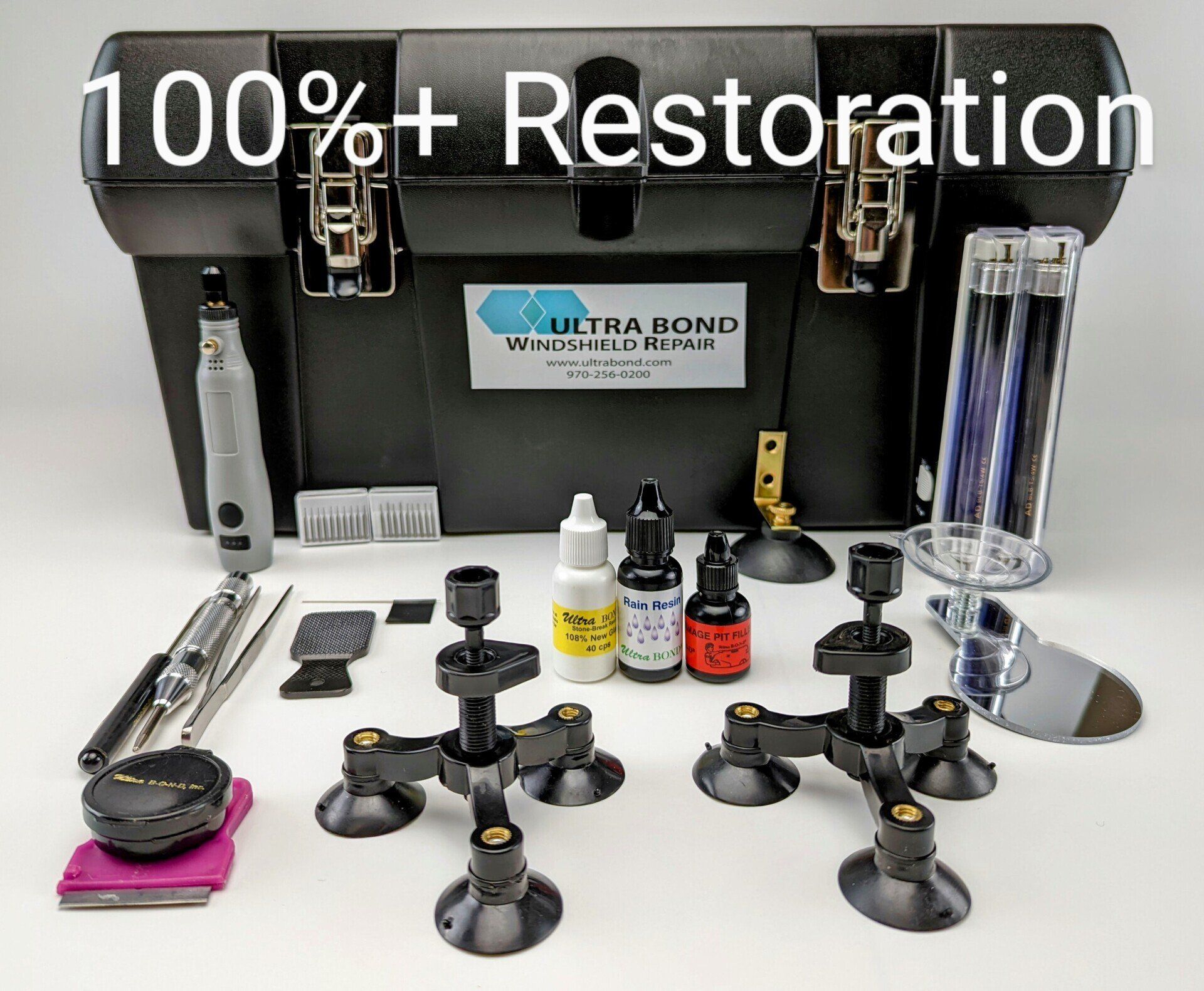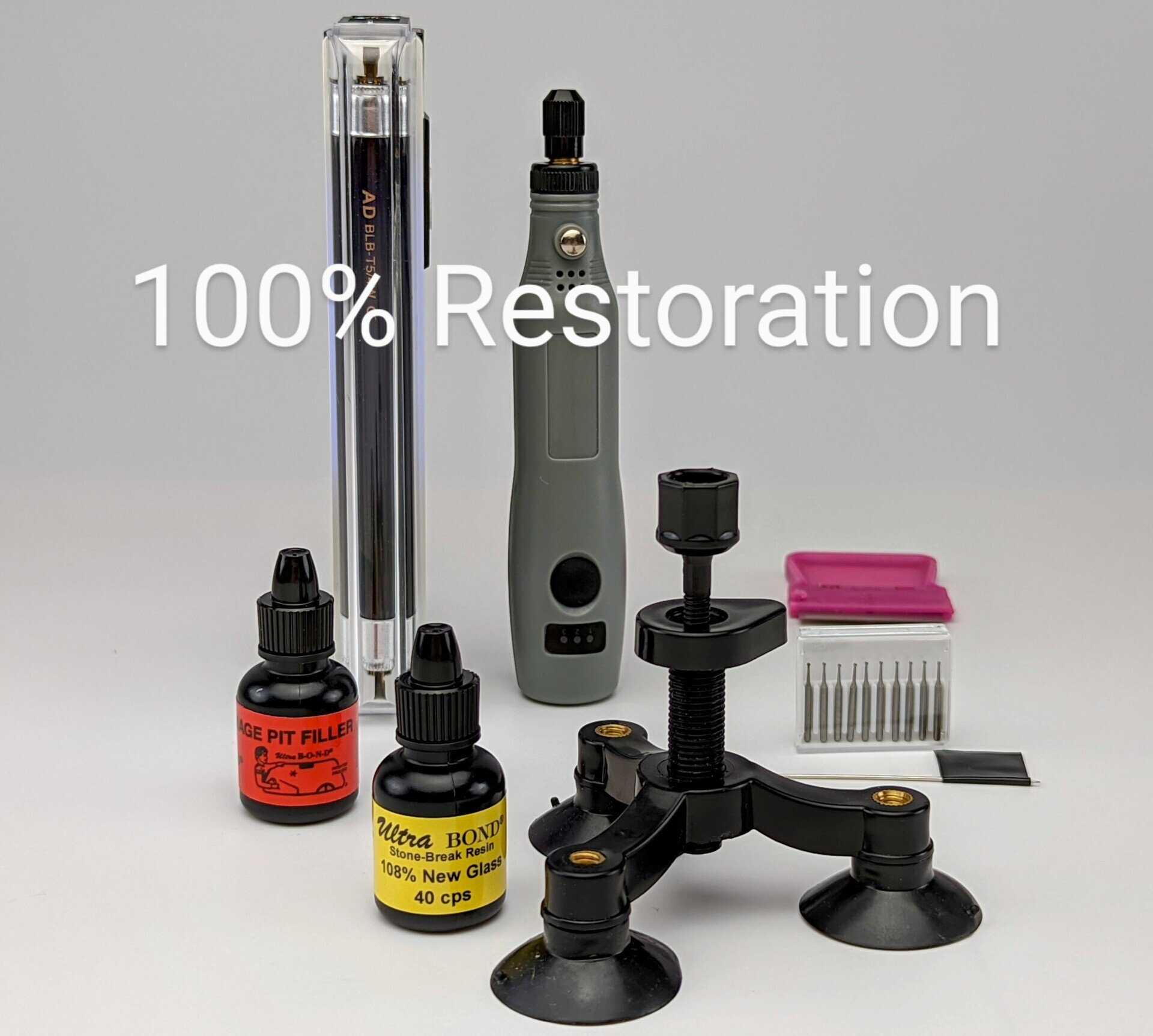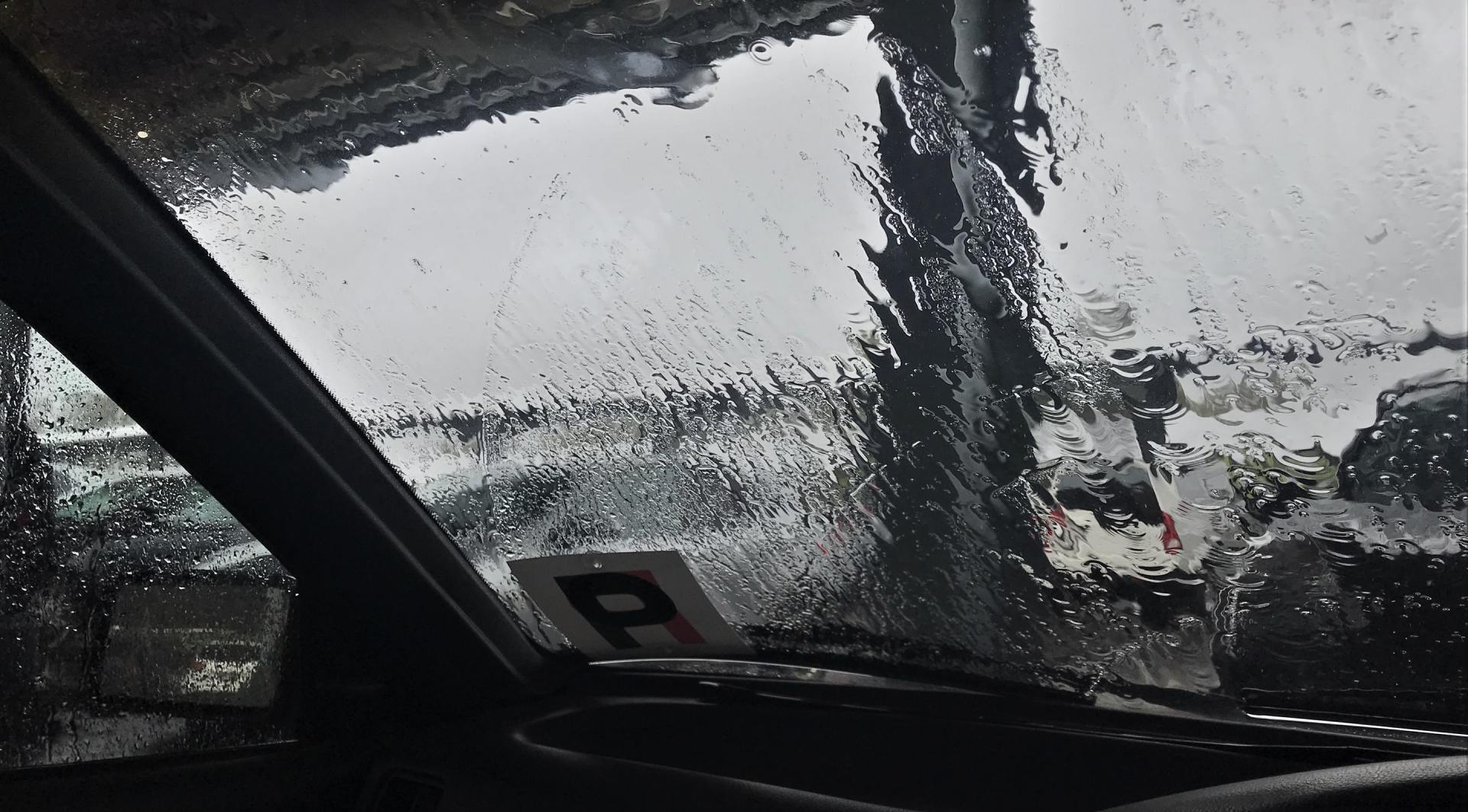Alternative Methods for Filling a Break in the Windshield
Why Stone-Breaks Will Sometimes Not Easily Fill?
Sometimes a stone-break will not easily fill with just the tools vacuum and pressure. This is mainly because of two forces. (1) The glasses own cohesive strength and (2) the 3,000 psi PVB bond to the glass. The 3,000 psi PVB bond is the main reason that many stone-break do not crack-out for years. You can also have some comfort in knowing that your resin has a 3,000 psi head start by this pvb bond as long as your windshield repair resin gets the tips of the cracks (legs) and the perimeter of the bullseye. The most basic function of the resin is to prevent a crack-out caused by thermal forces. Glass also breaks on the opposite side of impact which is why stone-breaks are sub-surfaced i.e. on the back side of the outerlite and above/against the PVB and for this reason you flex from the outside surface downward.
Almost all of these alternative methods are available to those with a piston-cylinder system.
Watch a video we created showcasing these methods,and don't forget to subscribe to our YouTube page.
Flexing by the Holding Structure –remember the two forces that are holding the break together are the two forces your tool needs to overcome in order to get the resin to the tips and perimeter of the break. This is where a piston-cylinder that is just larger than the impact point does well as it pushes down on the (un-surfaced) break and flexes the break open. Having control of this pressure is a must so you can increase the flex on the glass when the break is not filing. This type of tool will also allow you to use a higher viscosity resin which in and of itself has more durability due to increase oligomer. Attempting to automate chip repair by a machine and eliminate the technician ends up with disastrous results. Not having control of this pressure can cause a crack–out on a hot windshield by your tool having uncontrollable pressure.
Increasing Pressure on the Resin – pressure on the resin actually comes from the holding structure and more precisely the opposing force on the suction cup(s). Increasing the flex by raising the Wonder Bar structure by turning the injector and the center Pressure/Flex bolt increases both the flex on the glass and the pressure on the resin. A threaded piston also fine-tunes this pressure.
Flexing with a probe - this method of pushing down on a leg with a pointed metal tool flexes open the sub-surfaced leg. A tool must not cover the legs or when there is a stubborn leg you will end up needing to drill and in essence end up doing two repairs instead of just flexing a leg. Knowingly leaving a leg unfilled is an incomplete repair.
Flexing with a Star Flexor – a Star Flexor tool takes the place of manual flexing a leg with your hand and a probe. This flexes the leg for you and holds it for as long as is needed while you do something else.
Heat the Injector - Heating the injector will in turn heat the resin and drop its viscosity which will increase flow.
Drilling – Last but certainly not least is the good ole trusty drill. When all else fails then you drill. Not drilling or leaving a leg unfilled is an incomplete repair and, in my opinion, fraud.
You may have noticed that I did not mention putting a flame on the glass. That is because heat expands the glass which will close the leg. This also softens the PVB which can then cause flowering. So you are closing the leg, not opening it like flexing does. You are hoping that when the glass cools and the leg opens it is going to suck the resin up the leg (wishful thinking). That is about as efficient as trying to fill a break with only vacuum. It will cause under-filling of the break and legs. The rule of thumb with an adhesive application is to overfill.
These alternative methods are available to any piston-cylinder system. Any tool that covers the entire circumference of the break and beyond only allows for one alternative method to fill. The only alternative method for these systems is to Drill.
WINDSHIELD REPAIR KITS
Professional Crack and Chip
Windshield Repair Kit
Repair Chips and Long Cracks with One Simple Windshield Repair Tool consisting of two Wonder Bars that Repairs Chips and Long Cracks . Easy system to learn and use -over 90% of users learn by video and manual . No need to walk away from long cracks that pays you $100 +
$895.00
Starter Professional
Windshield Repair Kit
Starter Windshield Repair Kit. A Windshield Repair Kit with 2 Lab Tested Tools that has the third highest lab test score of professional tool in the industry. This is a windshield repair kit for the professional starting out on a budget. Self-Leveling .Sets up in seconds.
$289.00
PRO DIY Chip
Windshield Repair Kit
For a new chip repair business or do-it-yourself chip repair. The windshield is the third most important safety device in your vehicle and this kit will restore 100% of the strength. This windshield chip repair kit is good for all types of stone-breaks.....
$139.95
MORE RELATED BLOGS ON LONG CRACK WINDSHIELD REPAIR......
Exploring The Dos and Don'ts of Opening a Windshield Repair Business Part 1...
Date: Sept 25, 2017
Author: Richard Ultra Bond
Category: Windshield Repair Business Opportunity
Opening a windshield repair service can be a very profitable endeavor -- that is, if you conduct business properly and prioritize customer satisfaction. But with 253 million cars on the road, the windshield repair industry is certainly a growing market. And we should know -- as the makers of some of the most in-demand windshield repair kits used today....
How Patent Trolls and Insurers Tried To Kill Windshield....
Date: Sept 17, 2017
Author: Richard Ultra Bond
Category: Ultra Bond Legal News
Large auto glass companies, glass manufacturers, and PVB manufacturers formed a committee through the National Glass Association in 1994 attempting to attack the safety of crack repair and to write a new standard to eliminate all professional and DIY windshield crack repair...
Date: Mar 21, 2017
Author: Richard Ultra Bond
Category: Ultra Bond Legal News
This action seeks damages and additional relief against Safelite under Section 43(a)(1)(B) of the Lanham Act, 15 U.S.C. § 1125(a)(1)(B), which prohibits, inter alia, any “false or misleading description of fact, or false or misleading representation of fact, which . . . in commercial advertising or promotion, misrepresents the nature characteristics, [or] qualities . . . of . . . goods, services, or commercial activities.”
NAVIGATE
CATEGORIES
HELPFUL LINKS
Ultra Bond, Inc. Toll Free: 1-800-398-2663 Email: info@ultrabond.com
2458 EAST MAIN STREET #B1 GRAND JUNCTION, CO 81501 USA
© 2021 Ultra Bond Windshield Repair







